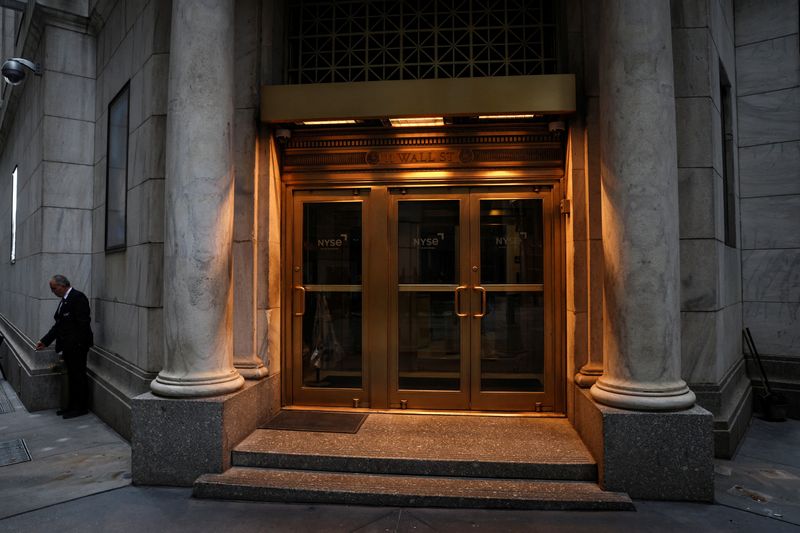By Shankar Ramakrishnan and Anirban Sen
NEW YORK (Reuters) – The pipeline for U.S. high-grade corporate bond issuance to fund mergers has fallen to the lowest levels in five years as President Donald Trump’s trade war deters deals, in what could be a boon for borrowers but a challenge for banks and investors.
Wall Street had expected the Trump administration’s policies such as deregulation and tax cuts to fuel a resurgence in deal activity and add $250 billion to $300 billion of investment-grade bonds to fund it this year, up from $179 billion in 2024, according to interviews with six debt capital markets bankers.
Instead, economic uncertainty due to Trump’s policies, especially the threat of tariffs on U.S. imports, has thrown markets into turmoil, and prompted executives to hit “pause” on deals while they await clarity. U.S. M&A volume in the first quarter fell 3%, Dealogic data shows.
Meghan Graper, global head of debt capital markets at Barclays, said only $8 billion of acquisition financing is currently in the pipeline for the market, compared with roughly $100 billion at the same point last year, the lowest since June 2020.
Overall, investment-grade bond issuance volumes were expected to average $1.65 trillion in 2025, some $150 billion more than a year earlier, according to Informa Global Markets.
Daniel Botoff, RBC Capital Markets global head of debt capital markets, said he had expected some 20% of issuance volumes this year to comprise M&A financing. “But that expectation is looking optimistic,” he said.
Some bankers and analysts said the lower issuance to finance deals could put tightening pressure on credit spreads, the premium over Treasuries that issuers pay to investors.
If the M&A slump continues, experts said it could also hit banks’ bottom lines, potentially leading to job losses in the industry.
Daniel Krieter, a strategist at BMO Capital, said he now expects overall investment-grade volumes for the year to end up closer to $1.5 trillion, the same as in 2024, the second-busiest year ever for issuance.
But that volume of issuance may not be enough to satisfy investors who are expected to be flush with cash.
Investors will get back nearly $1 trillion this year – which is unusually high – in interest payments and as bonds mature. Most of that amount is expected to be reinvested, according to a JP Morgan research note and analyst estimates.
This will be on top of the already-persistent investor demand to lock in the high yields on the highest-rated bonds before expected cuts in U.S. interest rates this year.
